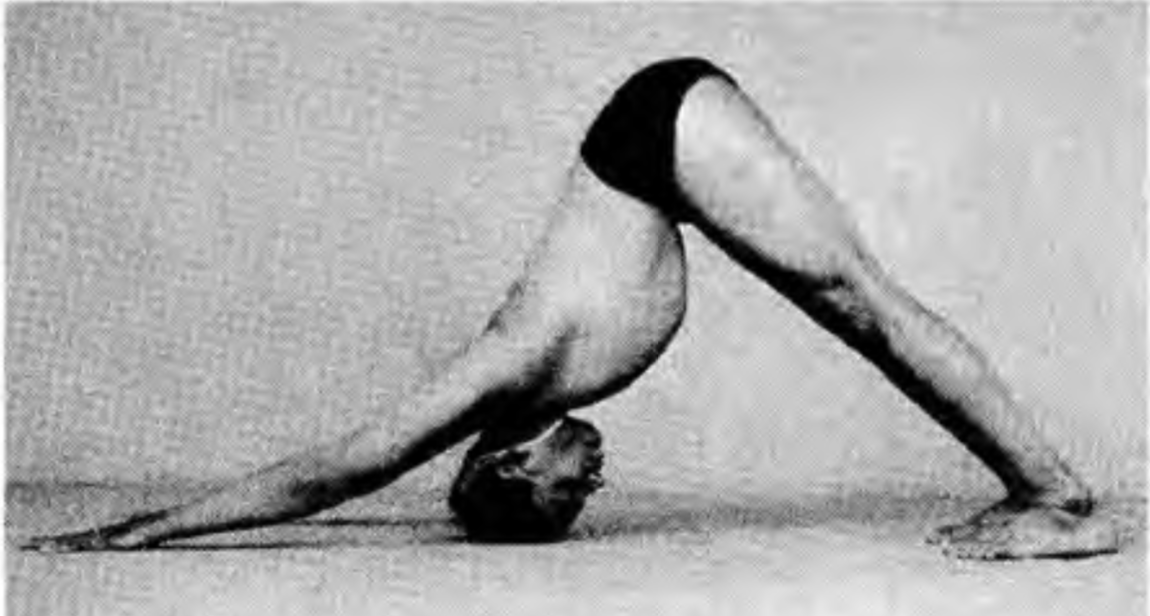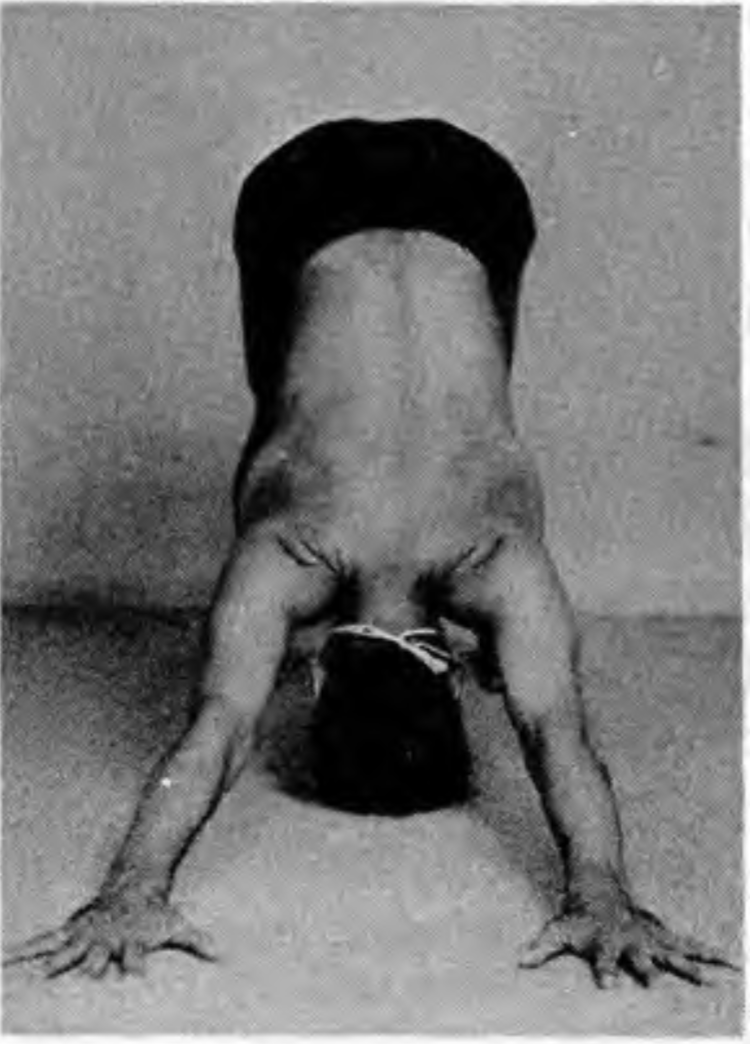Search your article
Adho Mukha Shvanasana
Adho Mukha Shvanasana – 5
Adho Mukha means having the face downwards. Shvana means a dog. The pose resembles a dog stretching itself with head and forelegs down and the hind legs up, hence the name.
Technique
r . Lie full length on the floor on the stomach, face downwards. The feet should be kept one foot apart.
2. Rest the palms by the side of the chest, the fingers straight and pointing in the direction of the head.
3· Exhale and raise the trunk from the floor. Straighten the arms, move the head inwards towards the feet and place the crown of the head on the floor, keeping the elbows straight and extending the back.
4· Keep the legs stiffand do not bend the knees but press the heels down. The heels and soles of the feet should rest completely on the floor, while the feet should be parallel to each other, the toes pointing straight ahead.
5· Stay in the pose for about a minute with deep breathing. Then with an exhalation lift the head off the floor, stretch the trunk forward and lower the body gently to the floor and relax.
Effects
When one is exhausted, a longer stay in this pose removes fatigue and brings back the lost energy. The pose is especially good for runners who get tired after a hard race. Sprinters will develop speed and lightness in the legs. The pose relieves pain and stiffness in the heels and helps to soften calcaneal spurs. It strengthens the ankles and makes the legs shapely. The practice of this asana helps to eradicate stiffness in the region of the shoulder-blades, and arthritis of the shoulder joints is relieved. The abdominal muscles are drawn towards the spine and strengthened. As the diaphragm is lifted to the chest cavity the rate of the heart beat is slowed down. This is an exhilarating pose.
Those who are afraid to do Sirasana can conveniently practice this position. As the trunk is lowered in this asana it is fully stretched and healthy blood is brought to this region without any strain on the heart. It rejuvenates the brain cells and invigorates the brain by relieving fatigue. Persons suffering from high blood pressure can do this pose.

